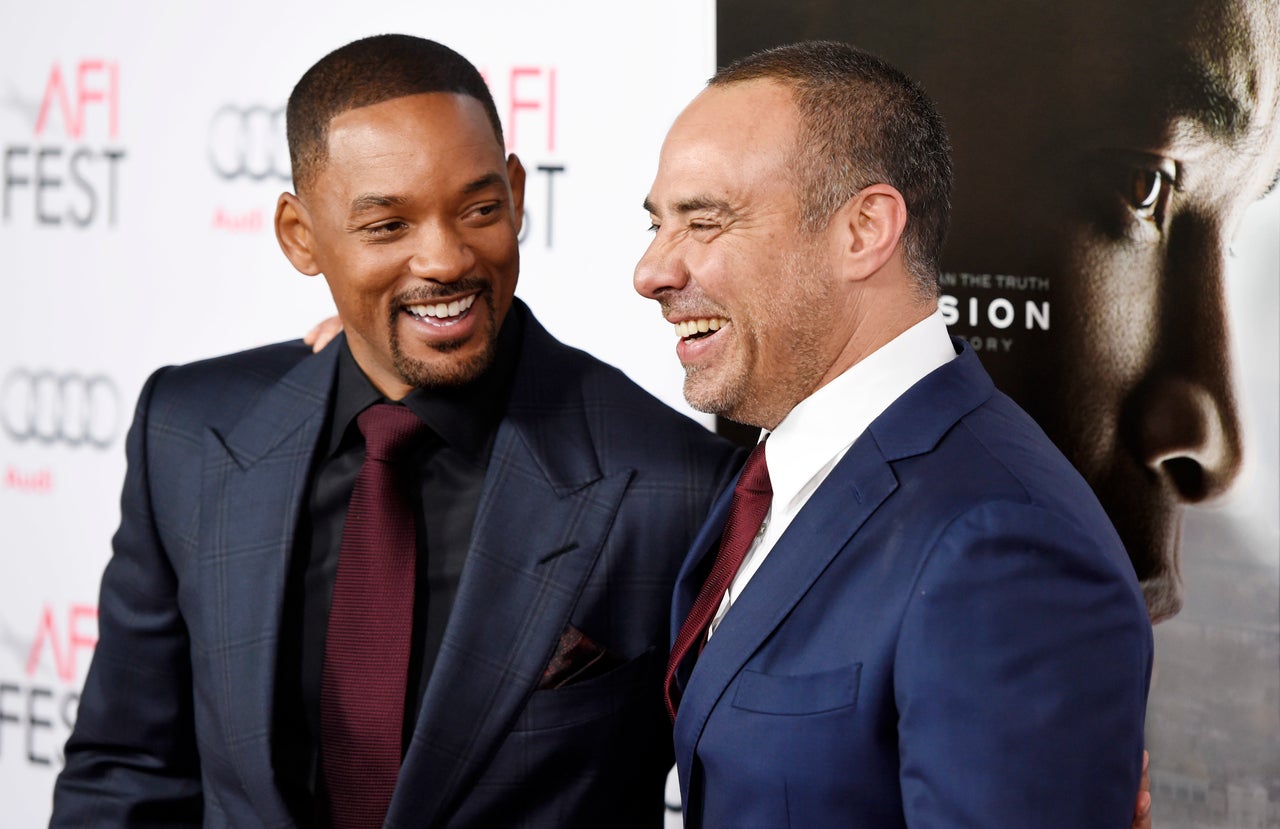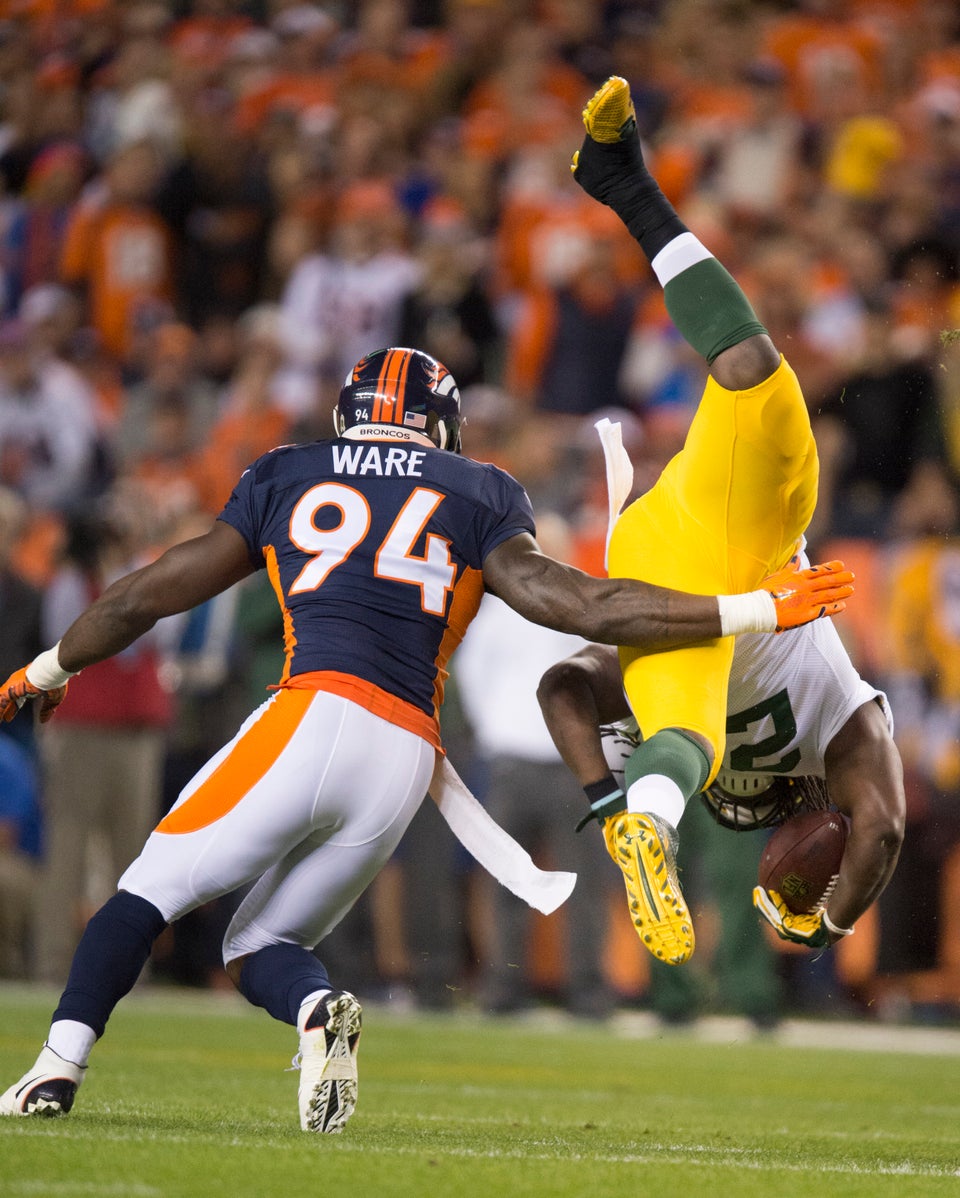For months now, controversy has followed “Concussion,” the highly anticipated film about the NFL’s concussion crisis, starring Will Smith.
The film, which will be released on Christmas day, traces the story of Dr. Bennet Omalu (Smith), the Nigerian forensic pathologist who discovered the brain disease chronic traumatic encephalopathy (CTE) in Pittsburgh Steelers legend Mike Webster after he died. Omalu assumed he would be celebrated for his discovery, which he believed made plain the dangers of football, but soon found himself at odds with a powerful organization that tried to discredit him.
Questions have continued to emerge about the film’s accuracy ever since a September story in The New York Times suggested Sony Pictures Entertainment softened the film to avoid conflict with the NFL -- a claim "Concussion" director Peter Landesman has repeatedly denied. Just last week, The Times published another story about "Concussion," this one about the family of former NFL player Dave Duerson, who believe the movie misrepresents Duerson's story; the Associated Press quoted researchers who claim Omalu took too much credit for the discovery of CTE.
Omalu himself has told The Huffington Post that he believes the film to be accurate, as did Jeanne Marie Laskas, the journalist whose 2009 GQ article about Omalu became the basis for the film, and Julian Bailes, the neurosurgeon who fought to have Omalu's research recognized. “The basic facts are correct,” said Bailes, who is played by Alec Baldwin in the film.
Arguments like these over the movie's finer points will likely never be settled -- Bailes admitted that filmmakers did take some small artistic liberties -- but what is less up to debate is this: Today, neuroscientists increasingly have a sense that the very injury that titles the film -- the concussion -- is receiving outsized attention in the battle against brain disease. Lurking alongside it is something much less noticeable but potentially just as harmful: the smaller, near-constant hits to the head inherent to the sport of football.
For years now, any discussion of football safety has inevitably come back to the concussion, a mild traumatic brain injury that can lead to symptoms including dizziness, nausea and blurred vision. But in separate conversations with HuffPost, Omalu and Bailes emphasized that there are growing signs that brain disease may not be caused by a handful of concussions, but by the total numbers of blows a football player takes to the head, regardless of whether they cause concussions or not.
Hits to the head that don’t lead to diagnosable concussions are called subconcussive, and studies have shown that the average football player will suffer hundreds of them in a single season, and thousands of them over the course of a long career.
These hits to the head, which don’t lead to diagnosable symptoms, are what researchers believe will become the real concern in the years ahead.
“It is not about concussions,” Omalu insisted to HuffPost. “We now know that all types of repeated blows to the head, no matter how seemingly innocuous, have the potential to cause brain injury.”
Bailes, who has worked with Omalu and others on papers related to subconcussive hits, reiterated this point to HuffPost.
“There’s a lot of evidence [now] that says it’s not just a recognized or known concussion [that’s the problem],” said Bailes, who is now co-director of the NorthShore Neurological Institute. “It’s the exposure to repetitive brain impact.”

In recent years, the general public has come to understand that football is dangerous, a result of the hard work of people like Omalu and Bailes. Multiple surveys have found that roughly half of those polled would rather not have their children play the sport.
Landesman is one such person. The "Concussion" director played football in high school and college. He cheered when the New York Giants beat the New England Patriots in the Super Bowl. But while researching the dangers of the sport for the movie, something in him changed.
“Now that I know too much about what happens to these guys, I can no longer watch without feeling complicit,” Landesman told HuffPost. “I start to feel like I’m part of the problem instead of the solution.”
“I would not let my child play football,” he added. “Not in any way.”
The newfound understanding of the dangers of football by people like Landesman is a victory for public health advocates. But whether because of scientists, the media or others, the country has collectively zeroed in on the concussion as the root problem. Football organizations, from youth leagues to the NFL, have spent years implementing and perfecting procedures to identify concussion symptoms and pull athletes. Football's crisis has been called the "concussion crisis."
This has frustrated researchers, who are having trouble getting across the message about subconcussive hits. On June 25, 2014, Robert Stern, a professor of neurosurgery at the Boston University School of Medicine and the director of clinical research at the Chronic Traumatic Encephalopathy Center, expressed his irritation in written testimony provided to the United States Senate’s Special Committee on Aging (emphasis ours):
Over the past few years, there has been a tremendous increase in public awareness of concussions and the need to prevent and manage them. The “concussion crisis” in sports is a hot topic in the media, on playing fields, and in doctor’s offices. However, when it comes to the long-term consequences of sports-related brain trauma, concussions are likely the tip of the iceberg. That is, subconcussive trauma appears to be as important or more important [than concussions] in the development of CTE.
Ann McKee, one of the Stern’s colleagues, is at the forefront of football's CTE crisis. A professor of neurology and pathology Boston University of School of Medicine, McKee and her research team in Boston made headlines in September when they announced that they had discovered signs of CTE in 87 of 91 deceased former NFL players.
But in a conversation with HuffPost, McKee reiterated Omalu's and Bailes’ argument that there is increasing evidence that concussions aren't the only or even root concern. Her research has yet to discover a direction correlation between the number of diagnosed concussions and the severity of CTE, but she said there are strong signs of an association between the length of exposure to subconcussive injuries and brain disease.
“So, research is really pointing in the direction of exposure [to total hits],” she said. “Not the number of isolated concussions.”
Should researchers in coming years more definitively determine that brain disease is linked to the total number of hits to the head a football player experiences, no matter the degree, it could be an even larger blow to football than the one it received at the beginning of the century, when a little-known scientist in Pittsburgh named Bennet Omalu discovered something odd in the brain of recently deceased NFL legend Mike Webster.
At least concussions can be diagnosed and recorded. What can you do about the sort of hits that so many players incur so many times every game?
Today, Bailes is the medical lead for Pop Warner football, the oldest and largest youth football league in the country, and he’s more optimistic than most that the sport will be able to become safer in recent years. But he’s still honest with himself when it comes to where football ranks among other sports in terms of its potential dangers.
“Football is the worst, because hitting your head, hitting the helmet and cranium repetitively hundreds or thousands of times a year is part of the play,” he said. “The same thing happens in the others, soccer or hockey, but it’s not so intentional."
“And it’s not every play."
Also on HuffPost:

